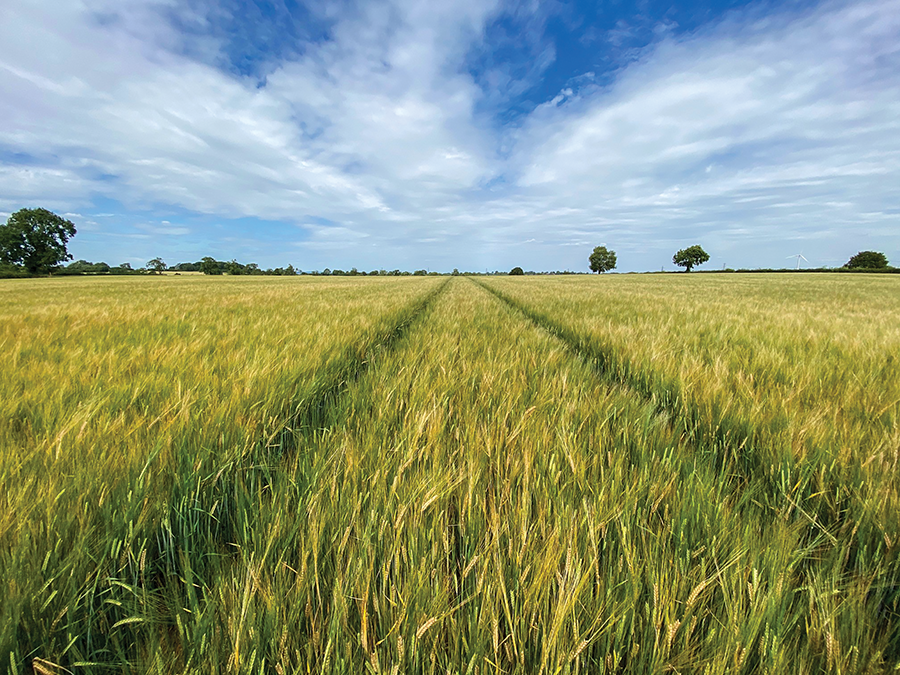Five priorities when choosing a spring barley variety
5th December 2023
Spring barley is an important rotational option on many farms, and more growers may well be looking to the crop in 2024 if exceptionally wet autumn weather has disrupted winter cropping plans.

Fortunately, there is a good range of varieties to choose from, offering attractive yields, lower growing costs than those typically associated with winter-sown crops, and premium potential where malting quality can be achieved.
But, whether the decision to grow spring barley is planned or unplanned, Limagrain UK arable technical manager, Ron Granger, says there are some key things to consider when selecting a suitable variety to grow next spring.
1. Market requirements
Start by fully understanding your grain buyer’s requirements in terms of variety and grain quality, especially when looking to supply premium brewing or distilling markets, says Mr Granger.
In some instances, contract specifications will dictate the variety that must be grown to supply a particular market, and criteria such as grain nitrogen content, will have an important impact on agronomic decisions and crop inputs throughout the season.
“This is particularly true for those dependent on hitting a certain grain nitrogen percentage to achieve the contract premium, notably distilling, which requires 1.65% N or lower, brewing 1.65-1.85%, and grain distilling at 1.85%+. Grain nitrogen is not a concern for animal feed.”
2. Dual use potential
Where variety choice is not dictated by the end user, growers have flexibility to select one that suits their requirements, growing conditions and farm situation.
With 13 malting and four feed varieties on the 2023/24 AHDB Recommended List, there is a good selection available, but Mr Granger recommends considering one of the dual use varieties, such as LG Diablo, which combines decent yield performance, with multiple end market opportunities, offering an advantage over many varieties now listed.
“Newer recommended varieties certainly offer higher yield potential, and if contracts are offered, then they are worth considering. But dual use varieties offer growers flexibility to grow for more than one market, whether that’s distilling, brewing, or feed market sectors.”
3. Vigour and tillering capacity
Newer varieties, such as LG Diablo, offer excellent spring vigour and high tillering capacity, which is a valuable trait in spring barley given the relatively short growing period, says Mr Granger.
The best way to maximise spring barley yield potential is to ensure high final ear counts. The AHDB Barley growth guide suggests the final target ear population should be around 775 ears/m2, but even higher final ear counts may be needed to drive yield, he notes.
“An 8–9 t/ha crop needs around 800 ears/m2, which at a 350 seeds/m2 rate, equates to around 2.5–3 tillers per plant at harvest.
“However, experience shows optimal tiller and ear counts may be underachieved in many situations, meaning crops fall short of achieving their full yield potential.
“Choosing a more vigorous tillering variety will help, as it will give some reassurance that the optimum tiller count will be reached.”
While variety choice, seed rate and drilling date all influence tillering and final ear count, the biggest issue is often the weather, he continues. “Drought will cause tiller loss, so growers must also ensure numbers are high enough at the outset by driving establishment and early rooting with front-loaded nutrition.
Where spring barley is being used in a black-grass situation, it is important that a vigorous, high tillering variety is selected, as a high tiller number must be ensured for the variety to compete. Later sowings will require increased seed rates to ensure a good canopy is achieved, as tillering ability will be limited due to the shorter growing period.
“Spring barley is a fast-growing crop and if key nutrients are deficient at any time, yield potential will be affected,” Mr Granger adds.
It has been shown in Limagrain trials, that higher yielding varieties respond positively to higher nitrogen inputs, due to their increased yield potential and, more importantly, a dilution of grain nitrogen content. Phosphate, potash, magnesium and sulphur, have proven beneficial to tiller retention and final yield, while additional micronutrients, including manganese, zinc, copper, iron, and boron, applied at the stem extension phase into flowering, are also useful, he says.
4. Disease resistance
Strong disease resistance is an important characteristic to look for in any variety, and spring barley is no exception, with mildew, rhynchosporium, and brown rust being the main considerations, says Mr Granger.
“Early drilling can significantly increase disease risk, so it may be particularly important to consider more disease resistant varieties for this situation.
“Spring barley doesn’t have a main yield-building flag leaf, so all leaves, including leaves two and three, must be kept clean and green as long as possible.”
A Limagrain UK survey of more than 100 growers last year, found that most (70%) usually apply two fungicides, which is the preferred approach in “normal” seasons, with the first at growth stage 31/32, and the second at GS 37/39.
Some may look to make savings in low disease pressure years, potentially putting more reliance on genetic resistance, however Mr Granger cautions that any savings should come from adjusting product selection and rate, rather than omitting sprays.
“If you’re only spraying once, it’s difficult to judge the best time to apply it, and you’re second-guessing the weather. The key is to remain flexible and react to the season.”
5. Resistance to lodging/brackling
Choosing a variety with good straw characteristics, is key to protecting yield and grain quality at harvest and potentially offers another significant output from the crop, be it for your own use, or for sale, says Mr Granger.
However, while a variety’s RL ratings for lodging and brackling provide a useful indication, it is also important to recognise the role that agronomic decisions play, notably around seed rate, nutrition, and the use/timing of growth regulators.
For more spring barley advice, see https://lgseeds.co.uk/crops/cereals/spring-barley/
Read more arable articles here


